Excavator lifting capacity chart – Excavator sizes chart: The use of excavators for lifting operations, particularly on construction sites, has become more common over the last few years. Excavators and backhoes are designed for rapid earth moving and are not designed for lifting operations as their principal function. When planning a lifting operation, you should first consider whether an excavator is the most appropriate machine, taking into account the type of lift and the duration of the task.
The purpose of this document is to set out precautions and procedures that should be taken into account when planning and carrying out lifting operations with excavators and other types of earthmoving equipment (backhoe and loaders) to enable the work to be done safely and in accordance with your legal duties.
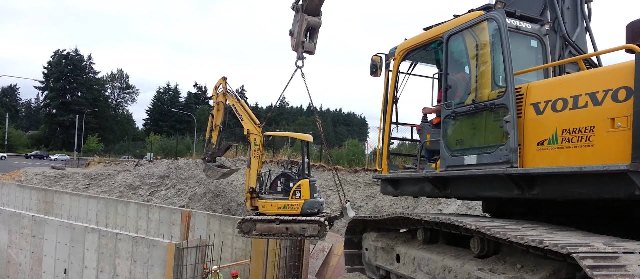
Excavator lifting plan
Excavator lifting capacity chart – excavator sizes chart: Particular Hazards Associated with Lifting with Excavators
The use of an excavator or backhoe for lifting creates additional hazards for personnel in the vicinity. Under normal circumstances, personnel are kept away from the working area around the bucket of an excavator, as this is considered to be a hazardous area.
Where the excavator is used for object handling however, the slinger has to be in the danger area in order to hook the load on to the hooking device. This puts the slinger at risk of being struck by the load, bucket or excavator arm if the excavator moves without warning.
One common incident of this type is where the excavator slews rapidly, for example when the operator catches the cuff of his coat on the left-hand joystick, and the ground worker is struck by the bucket or dipper arm or crushed between the dipper arm and a fixed object. Injuries are usually severe in these cases.

Excavator operator
Excavator lifting capacity chart: Excavator operators and slingers should be made aware of these dangers and effective communications must always be maintained between slinger and operator. The excavator operator should always make use of the safety lever (safety armrest) whenever the slinger is in the danger area.
Traveling with a suspended load is particularly hazardous. The pre-lifting risk assessment should ensure that the hazards associated with this operation are fully considered, particularly the presence of personnel adjacent to the machine’s travel path.
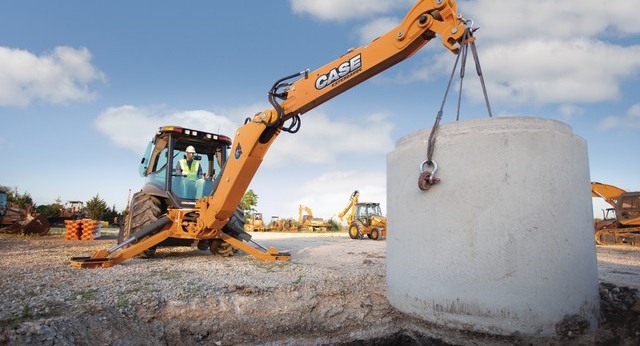
Using excavators for lifting
Excavator lifting capacity chart – excavator sizes chart: Lifting of Persons with Excavators
Excavators should not be used under any circumstances for the lifting of persons as they are primarily designed for excavating with a bucket and consequently are capable of operating speeds and movements which make them totally unsuitable for the lifting of persons.
Access to height on construction sites should be by machines designed for the purpose of lifting persons such as MEWPs, mast climbing work platforms, suspended access platforms or passenger/goods hoists, or by the use of scaffolds.
In exceptional circumstances and where it is not reasonably practicable to achieve access by less hazardous means, a suitable crane with a man-riding basket may be used.
Excavator lifting attachments
Excavator lifting capacity chart: Planning of Lifting Operations with Excavators. Excavator sizes chart
The regulation requires lifting operations to be properly planned, appropriately supervised and carried out in a safe manner, and this includes lifting by earthmoving machinery.
The competent person should first carry out a risk assessment, which will include ensuring that the earthmoving machinery is suitable for the task, that adequate lifting accessories are available and the ground conditions are suitable.
The lifting accessories, including quick hitches, should be suitable for the load and marked with their safe working load. The risk assessment will also address the need to segregate the lifting operation from other persons on site. Based on this risk assessment, a written method statement setting out the safe operating procedure to be followed should be prepared and communicated to all personnel involved in the lifting operation.
NOTE: For employers with 5 or more employees, the significant findings of the risk assessment must be recorded. The significant findings should include who is at risk, why they are at risk and how that risk is controlled. A comprehensive method statement could include this information.
Special attachments for lifting (or other uses) should be compatible with the machine and coupling means (quick-hitch) to which they are being attached. A competent person should verify that the combination is designed to take the load in this manner.

Lifting operation
Excavator sizes chart: Lifting Operations
Before lifting operations begin it is essential that all personnel involved are fully briefed on the significant findings of the risk assessment, the method statement and their individual roles in carrying out the task.
The supervisor should ensure that persons are kept well away from the lifting area, and in particular that there is no one working below the lift, for example in a trench. Personnel should wear hi-visibility clothing and other appropriate PPE. Excavator operators must never move the machine or load until they have satisfied themselves that the slinger/signaler and any other persons associated with the lift have all moved away from the danger area, to a position of safety.

Lifting accessories
Excavator lifting capacity chart: The slinger or operator should check the lifting accessories, including the lifting point, before use to ensure they are not damaged or worn. Any defective lifting accessories should be removed from service immediately.
Chain slings should not have any distorted links or components, hooks should not be bent and the safety clip should be in working condition. Fibre slings should be rejected when damaged, and in any case when the outer covering is worn to the extent that the inner cores are visible.
Where the hooking device (the point on the machine designed for connection of the load) is not part of the bucket, the bucket should (where possible, and unless the operator instructions specify otherwise) be removed in order to improve visibility and reduce the weight being lifted. If the bucket is retained, then the weight of both the bucket and quick hitch has to be added to the load when determining whether the load is within the rated capacity.
Lifting slings
When attaching lifting slings to the hooking device or lifting point care should be taken to ensure that the slings and their attachments are able to hang free at all times. Attachment using a shackle may limit rotation if, for example, a pipe suspended from the slings is to be turned end for end.
Fig. 2 shows the addition of a swivel to overcome this problem. Similarly, if the quick hitch is tilted backward and/or the dipper arm is raised, the master link of the sling and any attachments may be put into bending or twisting – possibly leading to damage or failure. These issues may reduce the height to which a load may be lifted to less than that indicated in the machine’s rated object handling capacity table.
The excavator operator should ensure that the acoustic/visual warning device indicating the load moment, is switched on prior to any lifting operation. (Excavator lifting capacity chart).

Excavator Requirements when Used for Lifting
Excavator lifting capacity chart:
The design of earthmoving machinery for lifting (object handling) is covered by the European standard.
Any earth-moving machine designed for object handling should have a rated object handling capacity table available inside the cab. If a rated object handling capacity table is not available then the machine should not be used for object handling.
NOTE: Handling attachments (e.g. grab) that do not require the assistance of a person for hooking or guiding are considered as normal earthmoving operations and do not require warning devices and a rated capacity table.
An earth-moving machine used for lifting operations must be fitted with a load hooking device. This may be mounted on the dipper, the quick hitch or the bucket. If the load hooking device is a hook then this should have a clip or other device which prevents a sling slipping off the hook. Many quick-hitches provide a load hooking device in the design of the hitch
Excavator lifting capacity
Excavator lifting capacity chart:
If the rated lifting capacity for an excavator or the backhoe portion of a backhoe-loader is greater than 1 tonne (or the overturning moment is greater than 40000Nm) then the machine must be fitted with:
- a boom lowering control device on the raising (main) boom cylinder(s) and which meets the requirements of ISO 8643:1997 and
- an acoustic or visual warning device which indicates to the operator when the object handling capacity or corresponding load moment is reached
NOTE: Loaders and the loader portion of a backhoe/loader do not require a boom lowering control device or acoustic/ visual warning devices.
NOTE: Where a risk assessment shows that there is a significant risk of overloading and/or overturning on machines with a rated capacity of 1 tonne or less, a Rated Capacity Indicator may be required.
Suitable slings must be available to attach the load to the excavator. Slings and other lifting accessories should be CE marked and marked with the safe working load.
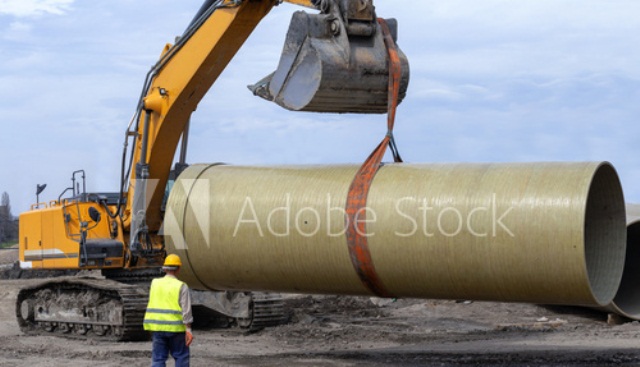
Excavator operator training
Excavator lifting capacity chart: Training and Competency Assessment
Excavator drivers and slingers should be adequately trained and assessed to undertake their roles in lifting operations. This training is added to the training required for operating the machine as an excavator.
- Prior to 2008, the CPCS category for excavator operation does not cover lifting operations.
- The current CPCS category has been amended to include lifting objects and will apply to all those taking the practical and theory tests from 1st August 2008.
- For existing CPCS excavator card holders, an additional module of approximately half a day’s duration, on lifting with excavators is in preparation.
Excavator maintenance
Excavator lifting capacity chart: Pre-use Checks, Inspections and Maintenance
All excavators, backhoes and front end loaders require pre-use checks, inspections, and maintenance to ensure that they do not deteriorate to an extent where the operator or other persons are put at significant risk.
Pre-use (Daily) Checks
Pre-use checks are normally carried out by the operator who should have been trained and assessed to carry out this task.
Pre-use checks should be recorded as having been carried out (for example on a timesheet) and a defect reporting system should be in place to ensure that any defects are rectified promptly.
Weekly Inspections
Weekly inspections may be carried out by the operator if they have been assessed as trained and competent. A record that the inspection has been carried out, together with a note of any deficiencies should be made. A management system for eliminating deficiencies should be in place.
Maintenance planner
Maintenance should be carried out at least at the intervals required by the manufacturer’s manual. The frequency of maintenance may be increased by factors such as usage and environment. Personnel undertaking maintenance should have been trained and assessed to carry out this task. All maintenance activities should be formally recorded.
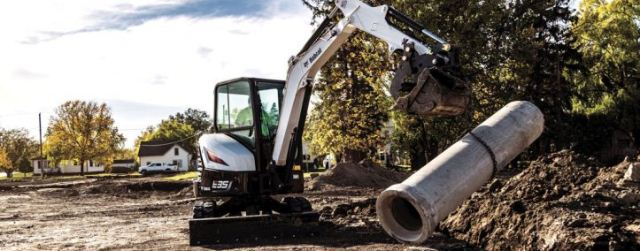
Excavator thorough examination
Excavator lifting capacity chart: Thorough Examination and Test
An excavator used for object handling is regarded as lifting equipment and requires thorough examination by a competent person at least every 12 months.
An excavator that is never used for object handling (for example, because it is not equipped with a load hooking device) does not require thorough examination but still requires regular inspection under PUWER which will be to a similar standard.
Front end loaders, not modified or adapted for lifting operations, do not require thorough examination under LOLER, but still, require regular inspection under PUWER. If the loader is used for object handling it will require thorough examination under LOLER at least every 12 months.
A report of a thorough examination of lifting equipment is not required where the employer has an EC Declaration of Conformity dated within the last 12 months.
Where a quick hitch is permanently mounted on an excavator then the thorough examination for the excavator will also cover the quick hitch. If the quick hitch is moved from one machine to another it is classed as an accessory and should be thoroughly examined every 6 months.
Slings, loose hooks, chain slings, polyester slings, shackles, etc. are classed as lifting accessories and must be thoroughly examined every 6 months.
Buckets with integrated hooks/lifting eyes are also classed as lifting accessories and should be thoroughly examined every 6 months
Maximum lifting capacity of excavator
Training your operators to use hydraulic excavators to lift loads or materials properly requires a return to fundamentals.
The versatility of hydraulic excavators is virtually unmatched in the world of construction equipment. Whether you’re talking about compact, mid-range or large hydraulic excavators, these machines are ideal for lifting, moving and placing a wide range of materials. As a result, it is important that hydraulic excavator operators are trained to properly lift loads or materials.
The rated lifting capacity of any hydraulic excavator is determined by two factors: hydraulic lift capacity and the tipping load. Hydraulic lift capacity is the point at which the excavator is limited by its hydraulic power to lift a load. Tipping load is the point at which the excavator begins to tip or lift off the ground when lifting a load.
It’s important to know how to read and understand an excavator lift chart. He cautions operators to factor in any lifting considerations that result from additional accessories or attachment variations, as these alternative items can reduce a machine’s effective lifting capacity. For instance, the weight of slings, any auxiliary lifting device and the weight difference of any attachment heavier than the standard configuration must be subtracted from the rated lift capacity to determine the correct net lift capacity.
Excavator Operator Training Manual
Safety & Operation Series
Training and reference for heavy equipment operators. Easy to understand format including photographs and illustrations for better comprehension.
Intended for beginner and experienced individuals. Great for self-study or to augment in-house training programs.
Excavator sizes chart
Lifting operation is an operation concerned with the lifting and lowering of a load. A load is the item or items being lifted which could include a person or people. A lifting operation may be performed manually or using lifting equipment.
If swinging with a load can It can cause an increase in radius and create instability causing the machine to tip over. The most dangerous or hazard area when lifting with an excavator is within the working radius of the boom/dipper.
Excavators that have a lifting eye and are used for lifting operations are subject to a thorough examination. If the only job they do is conventional ‘earth moving’ then the requirements of the Provision of Work Equipment Regulations (PUWER) apply.
A “critical lift” is defined as any non-routine crane lift requiring detailed planning and additional or unusual safety precautions.
Critical lifts include lifts made where the load weight is greater than 75% of the rated capacity of the crane; lifts which require the load to be lifted, swung or placed out of the operator’s view; lifts made with more than one crane; lifts involving non-routine/technically difficult rigging arrangement; hoisting personnel with a crane or derrick; or any lift which the crane operator believes should be critical.
The most read
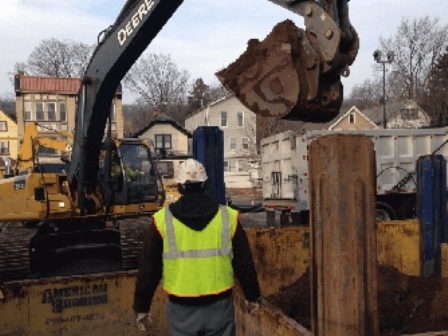
Excavator Lifting Points
Excavators and backhoes are designed for rapid earth moving and are not designed for lifting operations as their principal function.
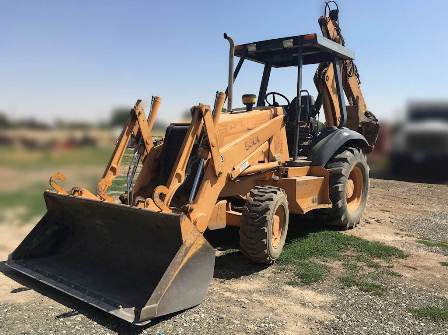
Backhoe Loader Specifications
A backhoe is a type of excavating equipment, or digger, consisting of a digging bucket on the end of a two-part articulated arm.
